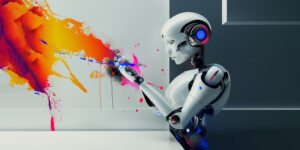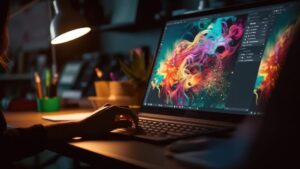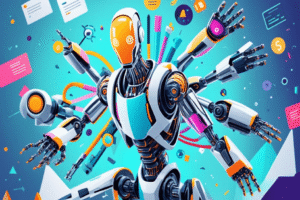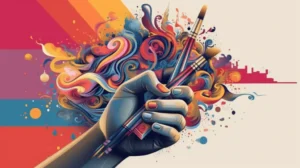In today’s fast-paced world, the need for instant and efficient design solutions has never been greater. This is where AI for real-time design updates steps in, transforming how digital creators work. By integrating artificial intelligence into design processes, creators can enjoy a seamless workflow, minimizing delays and maximizing creativity. Whether you’re a graphic designer, a fashion professional, or a digital marketer, understanding the impact of AI on real-time design updates is crucial.

The Rise of AI in Design
The integration of AI into design is not a futuristic concept; it’s happening now. AI technologies are being utilized to automate repetitive tasks, enhance creativity, and provide real-time solutions. This shift is evident across various design sectors, from logo animation to fashion print designs.
What Are Real-Time Design Updates?
Real-time design updates refer to the ability to make instant changes to a design project and see the results immediately. This capability is powered by AI, which processes changes and updates without delays. This is particularly beneficial for projects with tight deadlines or when multiple stakeholders need to view and approve design iterations quickly.
How AI Enhances Real-Time Design
AI enhances real-time design by automating mundane tasks, allowing designers to focus on creative aspects. For example, AI can handle tasks like color adjustments, layout modifications, and even content creation. By utilizing AI for real-time design updates, designers can ensure consistency and quality across their work.
Benefits for Digital Creators
Digital creators benefit immensely from AI-driven design updates. Some advantages include increased productivity, reduced error margins, and the ability to experiment with innovative ideas without the risk of significant time loss. AI also provides insights and suggestions, enhancing the overall design quality.
AI Tools Transforming Design Processes
Several AI tools have been developed to aid real-time design updates. These tools are designed to integrate seamlessly into existing workflows, providing designers with the resources they need to work more efficiently. Popular tools include design software with AI capabilities and platforms that offer AI design solutions.
Challenges and Considerations
While AI offers numerous benefits, there are challenges to consider. These include the learning curve associated with new technologies, potential over-reliance on automation, and the need for continuous updates and maintenance. Designers must balance AI’s capabilities with their creativity to maintain originality.
AI in Graphic Design
Graphic design is one area where AI has made significant strides. AI tools are used for tasks such as image recognition, layout optimization, and automated content generation. By adopting AI for real-time design updates, graphic designers can ensure their work remains competitive and relevant.
AI in Fashion Design
In fashion design, AI is used to predict trends, create patterns, and even design garments. This technology allows fashion designers to stay ahead of trends and produce high-quality work more efficiently. You can read more about this in our article on AI adapting to design trends.
The Future of AI in Design
The future of AI in design is promising. As technology continues to evolve, we can expect AI to offer even more sophisticated solutions for real-time design updates. The possibilities are endless, from improving user interfaces to personalizing design experiences.
Conclusion
Integrating AI for real-time design updates is transforming the creative industry. By embracing AI, digital creators can enjoy efficient workflows, innovative solutions, and enhanced creativity. The future looks bright for those willing to embrace these technological advancements.

FAQs
How does AI improve design efficiency?
AI improves design efficiency by automating repetitive tasks, providing real-time updates, and offering creative suggestions. This allows designers to focus on more complex aspects of their work.
Can AI replace human designers?
While AI can automate certain tasks, it cannot replace the creativity and intuition of human designers. AI complements human creativity by handling mundane tasks and providing insights.
What are some popular AI design tools?
Popular AI design tools include Adobe Sensei, Canva’s AI features, and various specialized platforms for graphic and fashion design. These tools help streamline design processes and enhance creativity.







